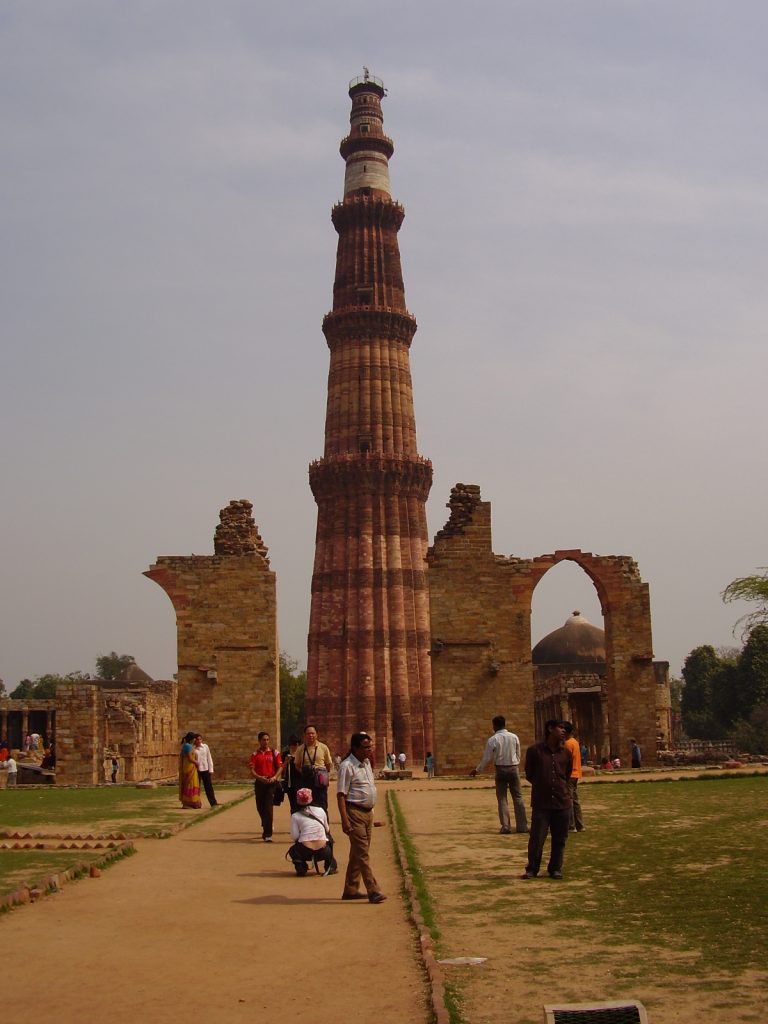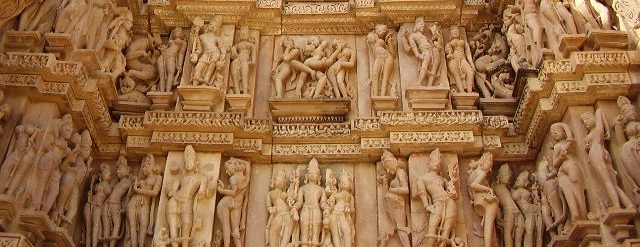The Qutub Minar Complex in New Delhi
The Qutub Minar Complex in New Delhi

In the Southern area of New Delhi, stands the most significant archaeological complex of the capital, called Qutub Minar; for the ancient purple minaret that stands out towards the sky.
The area is not close to the center, but can be easily reached by metro, avoiding to take a taxi or rickshaw to almost the outskirts of the city.
The minaret was built at the end of the twelfth century (1192-1220) to celebrate the victory of Islam over Hindu rulers. Sad story, because it saw the destruction of the 27 surrounding Hindu temples, whose stones were used for the construction of the Minaret, the Mosques and the Mausoleums erected here.
A careful visitor will notice that some parts of the ancient temples have remained; like the splendid colonnade at the foot of the Minaret which preserves the decorations on the bases, half-column and on the capitals typical of Hindu art, with magnificent reliefs of floral games and other phytomorphic forms; perhaps preserved for their beauty and tolerated as symbols by Muslim art.

The minaret, UNESCO heritage, remains the center of the complex with its 73 meters high, the tallest brick minaret in the world. Built of sandstone and marble under the order of Qutb ud-Din Aibak, the founder of the Turkish Mamluk dynasty in Northern India; the monument is dedicated to the mystic Sufi Qutbuddin Bakhtiar Kaki.
Finely decorated in Islamic style of the period, the tower of 14.3 meters in diameter has suffered various damages over the centuries; between lightning and earthquakes that saw the addition of alleys in height in the sixteenth century and restoration in the nineteenth century.
In the North-East part of the complex stands the Quwwat-ul-Islam Mosque, the first completed in India in 1197; the structure that has preserved part of the ancient Hindu temples described above, left to form part of the external courtyard.
Nearby stands the Steel Pillar, seven meters high, which has Brahmic inscriptions. It is said that if a believer manages to embrace the pillar with both hands and his back turned against the column, then his every wish will come true.
If you leave the archaeological site a bit ‘sad as me for the destruction of the antecedent temples, in front of the complex you can visit the huge statue of Buddha in the position of the Lotus Flower, at the height of a quiet staircase. Just to remember that India remains the greatest democracy in the world. For information on what to visit in Old Delhi, click here.

Pingback: Humayun Tomb, Lodi Garden and Safdarjung Tomb in New Delhi - Erica Leoni